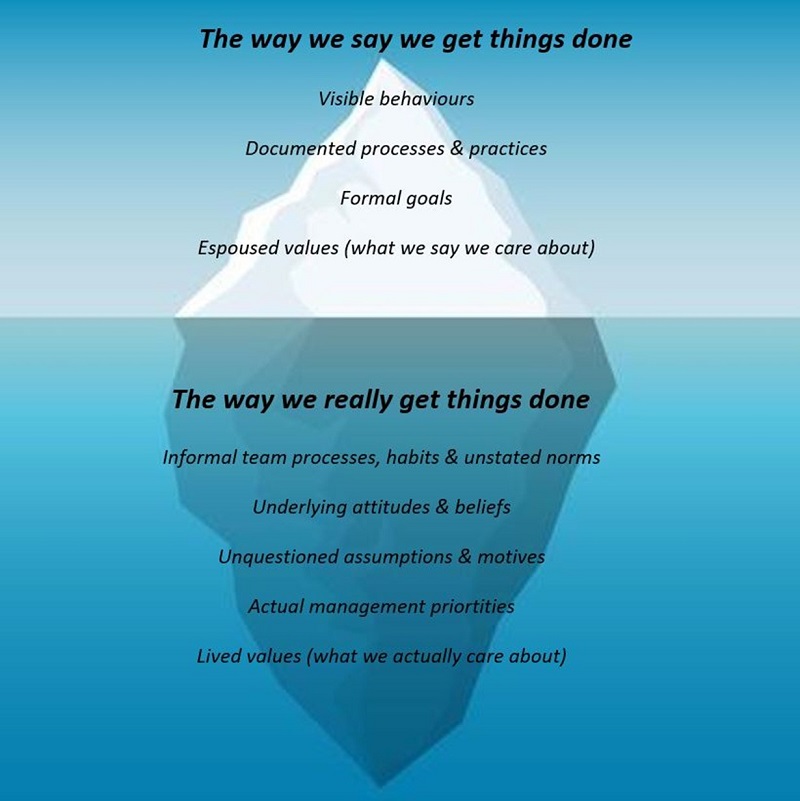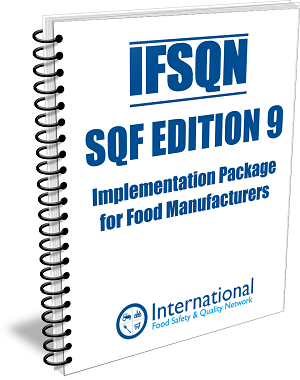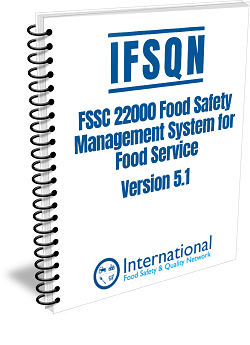- Home
- Sponsors
- Forums
- Members ˅
- Resources ˅
- Files
- FAQ ˅
- Jobs
-
Webinars ˅
- Upcoming Food Safety Fridays
- Upcoming Hot Topics from Sponsors
- Recorded Food Safety Fridays
- Recorded Food Safety Essentials
- Recorded Hot Topics from Sponsors
- Food Safety Live 2013
- Food Safety Live 2014
- Food Safety Live 2015
- Food Safety Live 2016
- Food Safety Live 2017
- Food Safety Live 2018
- Food Safety Live 2019
- Food Safety Live 2020
- Food Safety Live 2021
- Training ˅
- Links
- Store ˅
- More
Advertisement
Featured Implementation Packages
-
SQF Implementation Package for Food Manufacturers - Edition 9 (2022 Update)
This comprehensive documentation package is available for immediate download and... more
-
FSSC 22000 Food Safety Management System for Food Service - Version 5.1
This is a tailor-made food safety management system implementation package for C... more
Building A Food Safety Culture
Oct 12 2022 04:52 PM | Simon
food safety culture
The latest discussion document P1053 Food Safety Management tools from the national food regulator Food Standards Australia New Zealand wants an improved food safety culture with food service, hospitality, aged care and food retail. One of the issues flagged in the document, is that the rate of food-borne illness hasn’t gone down. This is alarming given that each one of us are consumers too, and it is concerning to think if we can really trust the safety & quality of the food that we are consuming and feeding people whom we love.
As Albert Einstein once said, “By doing the same things over and over again, we can only expect the same results”. The time has come for food businesses to think beyond the traditional training and relying on inspections, as a way of managing food safety risks. It is simply not enough and moreover, it is tiring to play catch up every time regulations change. It is time for businesses to think differently about the way they approach food safety and think of a sustainable way of maintaining safety standards that is not reliant on external checks but rather on their own people & systems and is ingrained as part of who they are. This is a short-hand way of describing what ‘food safety culture’ is about.
Any organisation that succeeds in establishing a strong food safety culture, not only stays clear of food safety and reputational risks, but gains respect and loyalty from employees, customers , regulators and even the society at large. In fact, their culture becomes their point of difference, and elevates their overall performance as well as brand image.
In this article, we will touch upon what food safety culture means, why it is important and outline some key ingredients for creating & maintaining a safety conscious culture.
The core reason why we got together as a team, is because we noticed that there are apparent gaps in the proposed approaches due to the lack of integration of food safety risk management with organisational development and culture change.
Culture is how we act, not what we say
Culture is commonly understood as ‘how we do things around here’. But it goes much deeper than that. ‘How we do things around here’, i.e. an individual’s or group’s behaviour is driven by their traditionally held norms & strategies (habits), underlying attitudes & perceptions (how they think & feel) and underlying values (what they actually care about).

For instance, an organisation where the leaders value and reward efficiency over safety will have very different staff behaviours, to an organisation where leaders value and hold people accountable to safety standards first.
Similarly, an organisation/team that promotes a culture of trust and open communication around food safety, will have open conversations around safety risks and resolve issues through both top-down and bottom-up communication. On the other hand, in a team/organisation that lacks trust or engages in blame, staff will keep quiet about safety risks.
Culture goes beyond having robust food safety processes, and procedures. It is reflected in the way every person on the team thinks, feels and acts in their daily job to ensure the food they produce is safe.
Key aspects of a strong food safety culture
There are several factors that influence the development and maintenance of a food safety culture. Some of the key factors include:
- Leadership commitment to producing safe food: Culture is driven by what the leaders and managers at all levels care about and is reflected in what they focus on in their daily work, where they invest their time & resources, and what conversations they have or not have with their team members. A strong food safety culture starts with the commitment of leaders and managers, to make ‘food safety’ a lived value/priority through their actions.
- Training and establishing safety processes: An important way of making food safety a lived value, is investing in providing resources and training support to ensure staff have the necessary skills, knowledge and competence to perform their roles. Training needs to go beyond covering food safety standards & procedures using an online training module or even a classroom. It needs to be incorporated as part of induction training even before an employee begins their formal responsibilities, followed up with regular refreshers/skills upgradation in line with industry norms. Clear and updated food safety procedures and systems need to be in place to embed the training into everyday behaviours. In the context of building a food safety culture, training also needs to include leadership development training for team managers & leaders (starting from the top) to equip them to manage the invisible but powerful aspect of managing human behaviour and creating the right team culture.
- Clear and open communication: Each person’s role in maintaining the expected safety standards needs to be clearly communicated and understood by all staff along the food supply chain (from farm to the plate). In this context, it is important for managers to promote a culture of trust and open communication, rather than that fear and blame. People need to feel safe to ask questions, clarify expectations and speak up when something feels off or share ideas to improve safety standards. Conversations around food safety risks need to be actively promoted and encouraged as a way of adopting ‘food safety’ as a shared value.
- Creating shared accountability: Clearly communicating expectations around food safety requirements, setting up safety procedures and supporting employees through training & communication as outlined above sets them up for food safety success. A key aspect of building shared accountability is establishing clear benchmarks of what success looks like, and assessing performance on safety periodically. Providing individualised feedback to let team members know how they are progressing makes people want to go the extra mile, take pride in and own their safety outcomes. This also means, not tolerating wilful negligence and repeated lack of compliance, through clearly established consequence procedures.
- Hiring, promoting and rewarding desired (food safety) behaviours: Culture gets embedded by paying attention to who gets hired, promoted and rewarded within the organisation. By hiring and promoting people who value ‘food safety’ and want to be part of a team that takes it seriously, the organisation creates a win-win relationship. It leads to higher job satisfaction, a strong sense of purpose and belonging for the staff. In turn, the organisation enjoys higher productivity, staff engagement and loyalty. Recognising and rewarding food safety behaviours sends a clear signal on expected behaviours and attitudes.
- Seeking and responding to consumer feedback: Consumer attitudes to food have changed significantly over the years. Today it’s a combination of factors: locally sourced, humanely produced, the nutritional value, convenience, price and safety. Seeking customer feedback is key to assessing and improving food safety standards. The best food businesses not only use social media to market their products but are quick to respond to safety incidents and promptly manage customer experience.
If serving safe food to your clients matters to you deeply and you are curious to explore more about how you can go about building a food safety culture and lead the market, reach out to us at info@thinkstsolutions.com.au. We look forward to supporting you!
Dr. Douglas Powell is a former professor of food safety at Kansas State University who resides in Brisbane, Australia. He received a PhD in food science from the University of Guelph in 1996. Powell has published over 60 peer-reviewed papers, book chapters and a book and has written over 10,000 entries for barfblog.com since 2006. He teaches courses in food safety risk analysis, policy, communications and culture, and works with a lot of graduate students.
Andrew Thomson is a director of Think ST Solutions a food safety consultancy that creates food safety solutions for the food service, hospitality and food retail sectors. Andrew is a former board member of a not-for-profit community food service operation and a contributing writer on food safety matters for wf Media.
Madhu Jeyakumaran is a director of Think Stride advisory firm that specialises in helping leaders build high-performing teams and thriving cultures. She delivers evidence-based leadership courses at the University of SA. Previously, she worked for PwC and HSBC Bank specialising in driving culture change and talent development. She has a master's degree in HR, and is accredited in world-class training/coaching methodologies, acclaimed culture analytics, and leadershi









0 Comments